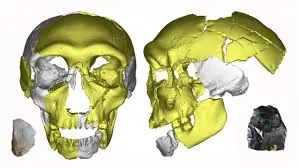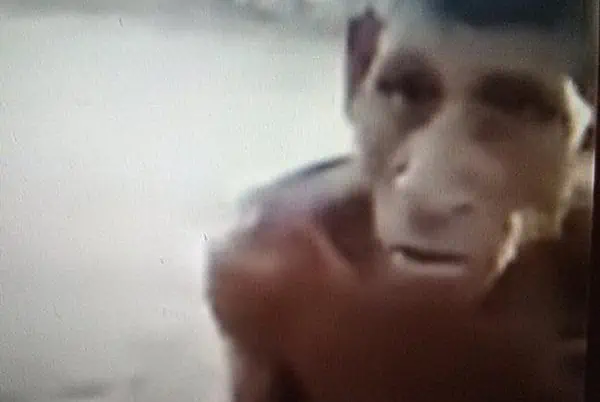A Denisovan retrospective
 The Denisovan story has taken some wild and crazy turns since the species was first discovered by Johannes Krause at the Max Planck Institute in Leipzig in 2011.
The Denisovan story has taken some wild and crazy turns since the species was first discovered by Johannes Krause at the Max Planck Institute in Leipzig in 2011.
A band of eccentric Russian archaeologists first discovered a Denisovan pinky bone in a cave in southern Siberia, in 2008. From there, the story takes some wild and crazy turns.
The Russians cut the bone in half. And to this day, nobody is sure why they did it. They sent one half to an institute in Paris. The second half was sent to Leipzig. Krause late one night, ran the DNA sequencing of the fossil bone fragment, and discovered it wasn’t Neanderthal or Homo sapien.
A quick review: Who are the Denisovans, from MSN Science & Technology:
Today, all modern humans are Homo sapiens, but as a species we have taken millennia to evolve. The very earliest human ancestors (a.k.a. hominins) emerged around 7 million years ago, while species in our genus, Homo, began appearing about 2.3 million years ago. Within the last 150 years or so, scientists have discovered evidence for at least eight different hominins in Homo, from Homo erectus, the first to migrate out of Africa, to the tiny Homo floresiensis, who stood only 3 feet, 6 inches tall.
Tibetan Monk finds a Denisovan jawbone under a rock in a cave
 In the 1980s a Buddhist monk in a cave, turned over a rock and found a precious Denisovan jawbone. It sat on a shelf for over 30 years. In 2008 a fishing trawler off the coast of Taiwan dredged up another Denisovan jawbone. In the Philippines an isolated tribe of original inhabitants of the islands, have up to 7.8% Denisovan DNA.
In the 1980s a Buddhist monk in a cave, turned over a rock and found a precious Denisovan jawbone. It sat on a shelf for over 30 years. In 2008 a fishing trawler off the coast of Taiwan dredged up another Denisovan jawbone. In the Philippines an isolated tribe of original inhabitants of the islands, have up to 7.8% Denisovan DNA.
And the very latest… Chinese anthropologists are now saying the giganto Dragon Man of Manchuria is actually a hybrid of Altai-Denisovans. Ancestors of Amerindians? New Denisovans discoveries are occurring at a rapid pace.
The Chinese anthropologists are specifically stating that the Homo longi skull (Dragon Man), which is dated to 300,000 years ago, likely comes from an early Denisovan, soon after the split with Neanderthals and Homo sapiens.
From MSN.com,
A Million-Year-Old Skull Could Prove the Dragon Man’s Direct Line to Humans
 Using new technology, the team restored and reconstructed the cranium, and the results suggested that whoever this skull used to belong to was “an early member of the Asian ‘Dragon Man’ lineage, which probably includes the Denisovans, and is the sister group of the H. sapiens lineage.”
Using new technology, the team restored and reconstructed the cranium, and the results suggested that whoever this skull used to belong to was “an early member of the Asian ‘Dragon Man’ lineage, which probably includes the Denisovans, and is the sister group of the H. sapiens lineage.”
The team said that both the H. sapiens and Dragon Man lineages having deep roots extending beyond the Middle Pleistocene age, and the Yunxian fossil cranium “suggests it represents a population lying close to the last common ancestor of the two lineages.”
They are further quoted:
“It is very controversial whether these fossil humans represent different species or lineages,” the authors wrote in the study. “The 1-million-year-old Yunxian 2 fossil from China is crucial for understanding the cladogenesis of Homo and the origin of Homo sapiens.”
Denny, the Denisovan-Neanderthal hybrid
Perhaps the most amazing story involving Denisovans is the Denisovan-Neanderthal hybrid discovered in 2022, named “Denny.”
Ladbible.com, May 22, 2024 explains:
 After examining the thousands of bones, one of the samples appeared to belong to a human species, but it needed further inspection.
After examining the thousands of bones, one of the samples appeared to belong to a human species, but it needed further inspection.
It was sent to Svante Pääbo at the Max Planck Institute for Evolutionary Anthropology in Leipzig for more detailed analysis.
They discovered that the bone belonged to a girl who was 13 years or older at death.
What was interesting though is that the sample contained Neanderthal DNA, and the other half Denisovan DNA.
This video, first in a series, serves as an introduction to the human species.
Paleo-artist John Bavaro is quoted:
“By taking a genome analysis from the specimen’s mitochondrial DNA on a single bone fragment recovered from the Denisova Cave in the Altai Mountains of Russia, palaeo-geneticists Viviane Slon and Svante Pääbo of the Max Planck Institute for Evolutionary found that she had 40 percent Denisovan genes from her dad and 40 percent Neanderthal genes from her mom.”
Much more to come…


